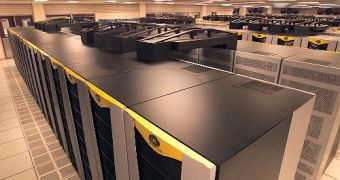IBM is perhaps the largest supercomputer designer, manufacturer and vendor in the world, having made history with its servers and mainframes. Now it looks as if the well respected company will soon start building a new supercomputer for the National Science Foundation that will be housed at the National Center for Supercomputing Applications at the University of Illinois at Urbana-Champaign. The news were placed in the public part of a federal U.S. Web site, according to the news site of the newspaper NYTimes.
IBM will build the machine that is worth $200 million and it is said that the cost of operating it will add some $400 million to the total spending bill, over its limited five years lifetime. The contract given to IBM is already controversial and it created widespread concern among other computer manufacturing companies involved in supercomputer design and manufacture. This new machine will be the first one capable of reaching the petaflop limit, which means it will perform one thousand trillion mathematical operations a second and unlike most already existing supercomputers, it will work only on a limited number of heavy duty research projects like global warming simulations. "This will be a rather special machine," said Jack Dongarra, a computer scientist at the University of Tennessee, who is one of the researchers that have helped rank the world's fastest supercomputers. "It's like the Hubble telescope."
The controversy floats around the ranking system that was used to decide which is the fastest performing supercomputer in the world. Until some time ago that title belonged to a Japanese machine, the Earth Simulator. It is a specialized supercomputer, capable of 35 trillion mathematical operations a second, or teraflops and when it was built, in 2002, its cost reached $400 million. The total cost of operating the Earth Simulator is said to reach $1 billion soon and this while a research Japanese team is working on a design that should reach the 10 petaflops limit by 2011. From 2004, the fastest computer was considered the IBM BlueGene/L that was housed at the Lawrence Livermore National Laboratory.

 14 DAY TRIAL //
14 DAY TRIAL //